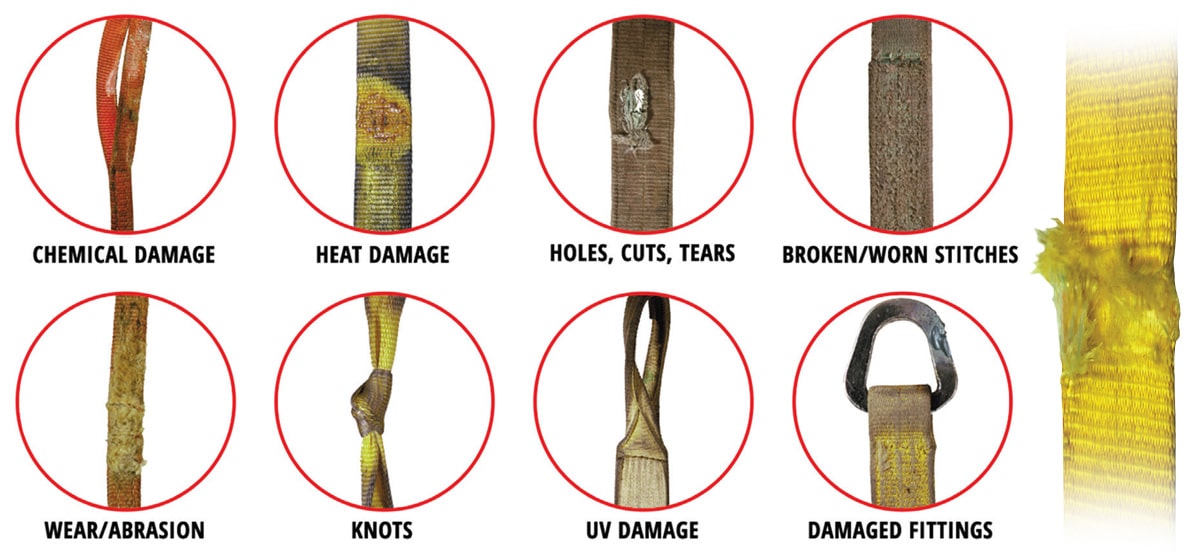2-3 | Basic Inspection Criteria
<p>The goal of a sling inspection is to evaluate remaining strength in a sling which has been used previously to determine if it is suitable for continued use. When inspecting web slings, daily visual inspections are intended to detect serious damage or deterioration which would weaken the strength and integrity of the sling.</p>
The goal of a sling inspection is to evaluate remaining strength in a sling which has been used previously to determine if it is suitable for continued use. When inspecting web slings, daily visual inspections are intended to detect serious damage or deterioration which would weaken the strength and integrity of the sling.
While a web sling has a higher resistance to mildew, rot, some chemicals, and abrasion—they can still be damaged to the point where they need to be removed from service. This inspection is usually performed by the person using the sling in a day-to-day job.

ASME B30.9 standards specify that a synthetic web sling shall be removed from service immediately if any of the following conditions are present:

Missing illegible sling identification

Acid or caustic burns

Melting or charring of any part of the sling

Holes, tears, cuts, or snags

Broken or worn stitching in load-bearing splices

Excessive wear or abrasion

Knots in any part of the sling

Discoloration and brittle or stiff areas on any part of the sling, which may indicate chemical or UV damage

Fittings that are pitted, corroded, cracked, bent, twisted, gouged, or broken

For hooks, removal criteria as stated in ASME B30.10

For rigging hardware, removal criteria as stated in ASME B30.26

